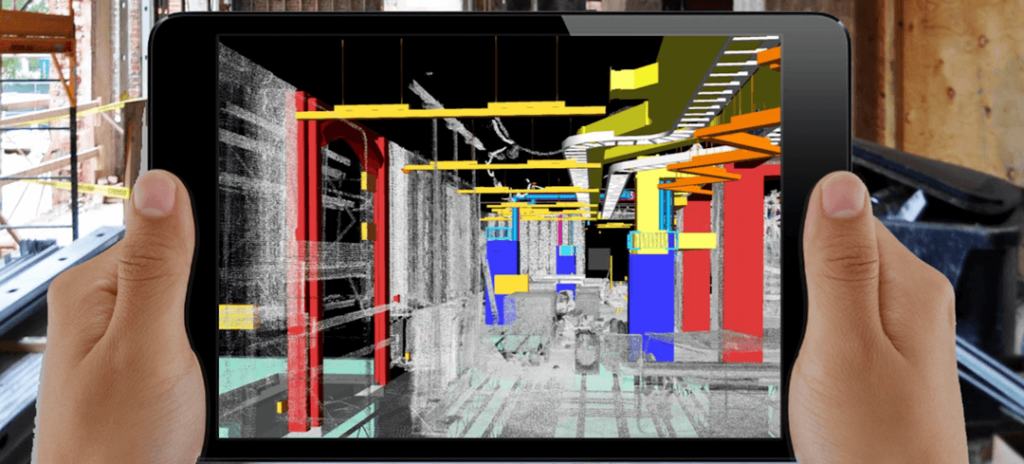
Artificial intelligence, robotic masons, virtual reality, augmented reality, mixed reality. There’s a lot of new technology to keep track of these days, and learning how any tech impacts business can be especially challenging. Here’s a new and useful system for laying brick that a lot of us probably anticipated, and now it’s in use.
This is a mixed-reality system that combines Microsoft’s Hololens headset smartglasses with digital 3D technology by Fologram so a mason sees in real time the 3D digital plan as he’s placing bricks. Check out the video and you’ll get the idea immediately. Mixed reality is a subset of virtual reality, in that the user manipulates both digital and physical objects, in this case, bricks.
Essentially, this combination of technology tools eliminates the need for a printed 2D drawing while it also acts as a laser level. This looks like a time-saver and a game-changer, as teams can work together faster, with their headsets keeping them synchronized to the current brick. One cuts each brick precisely as directed by the 3D view, and the other installs, also directed by the 3D view. The bricklayer in the video commented that the system allowed two men to complete a wall in 6.5 hours that would have taken them about two weeks without the tech.
A crucial factor to the success of this technology hinges on the quality of the 3D model. The output can only be as good as the input, as the goggles will show the user what’s programmed to display, so the standards for the 3D models have to be reliable and accurate.
Another unanswered question is whether this system applies to form work, too. It seems that the goggles would show the user whatever design is loaded, so forms would be simple, and their placement would be faster. Can you imagine setting forms in half the time you’re accustomed to?
Though the video shows a complex project with curving brick walls, it’s easy to imagine how versatile the system can be for all kinds of construction. Another hybrid system dispenses with the goggles and relies on cameras and screens, so it doesn’t appear as advanced as a headset, but in practice it would still be faster on a complex project than even a skilled bricklayer. That approach, however, sets up electronic devices in the workspace, requiring extra care for their protection.
Considering the advantages of masonry construction—durability and design flexibility, for example—compared with seeming disadvantages—cost and time of construction—a system like this appears to nudge the marketplace towards masonry choices. These examples are tiny projects, too. Think of the time savings on even a small commercial or municipal project built with these systems. It might be desirable to add a bricklayer or two to the project, saving even more money and time, and letting contractors bid more competitively with other material choices.
When we see examples of advancing technology, it’s common to wonder how this affects the workers. Once again, this looks like an example of workers with skills coming out on top. The most-skilled bricklayers will continue to do the best work with a mixed-reality tool like this, with commensurate pay. Those who don’t keep their skills current will be left behind.
The tech is surprisingly cheap, starting at $3500 for the Hololens, while Fologram will sell the package of headset and their software for $125/month. Considering the potential boost in assembly speed, it will be interesting to see how augmented reality can become more integrated into masonry as more applications for this technology are found.